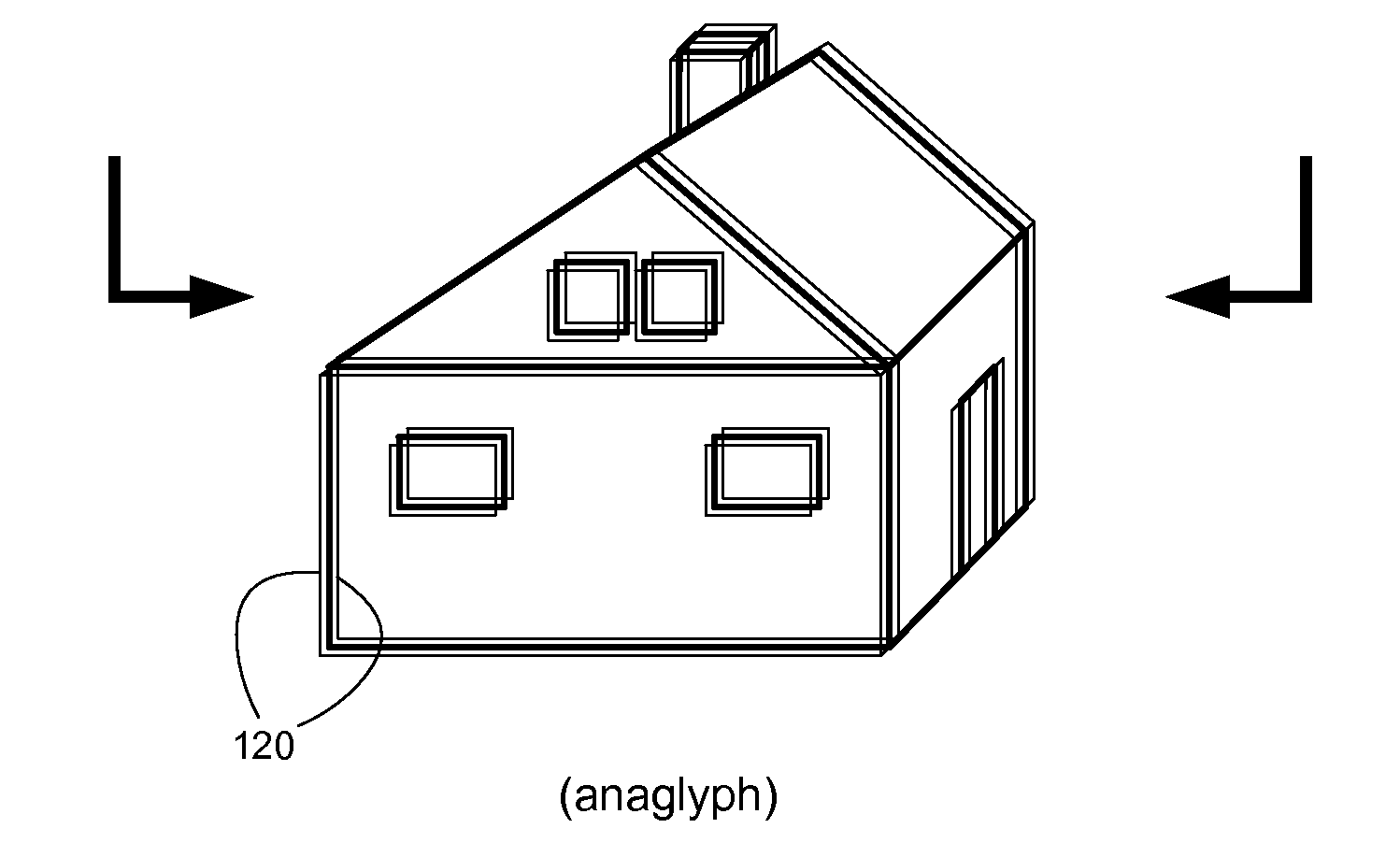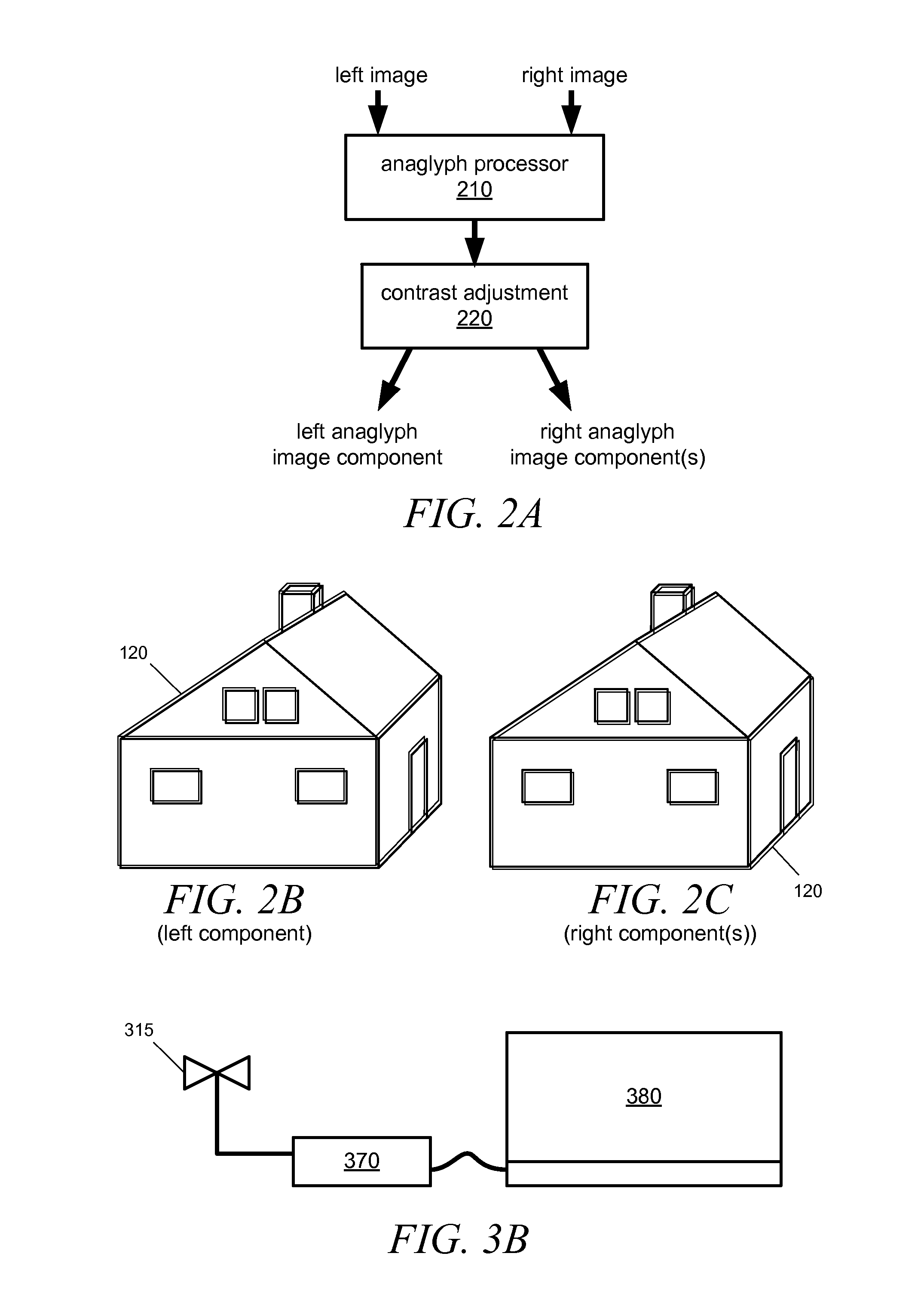Contrast adjusted anaglyph for reducing ghosting artifacts
a contrast adjustment and anaglyph technology, applied in image enhancement, image analysis, instruments, etc., can solve the problems of distracting, degrading imaging quality, etc., to reduce or eliminate ghosting artifacts, distract viewers, and degrade imaging quality
- Summary
- Abstract
- Description
- Claims
- Application Information
AI Technical Summary
Benefits of technology
Problems solved by technology
Method used
Image
Examples
Embodiment Construction
[0019]By way of introduction, FIGS. 1A-1E depict one process by which an anaglyph image may be formed. An image of a scene may first be captured as a stereoscopic pair 100 of images (e.g., left and right). In one embodiment, the pair of images may be color images that are used to produce a color anaglyph, and may correspond to images that would be perceived separately by an individual's left and right eyes. The pair of images 100 (FIG. 1A, FIG. 1B) may appear to be nearly identical, except they may be recorded from different angles.
[0020]To produce anaglyph images, the images may be processed. Each image may be a color image, and may be represented using a tri-color basis, e.g., red, blue, and green. Other color bases including black, white, and / or grayscale bases, may be used in other embodiments of anaglyph imaging, and in some cases colors may be altered to produce black and white or grayscale anaglyphs. To prepare an anaglyph image, components of each stereographic image may be ...
PUM
 Login to View More
Login to View More Abstract
Description
Claims
Application Information
 Login to View More
Login to View More - R&D
- Intellectual Property
- Life Sciences
- Materials
- Tech Scout
- Unparalleled Data Quality
- Higher Quality Content
- 60% Fewer Hallucinations
Browse by: Latest US Patents, China's latest patents, Technical Efficacy Thesaurus, Application Domain, Technology Topic, Popular Technical Reports.
© 2025 PatSnap. All rights reserved.Legal|Privacy policy|Modern Slavery Act Transparency Statement|Sitemap|About US| Contact US: help@patsnap.com



